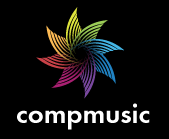Carnatic Varnam Dataset
Carnatic varnam dataset is a collection of 28 solo vocal recordings, recorded for our research on intonation analysis of Carnatic raagas. The collection has the audio recordings, taala cycle annotations and notations in a machine readable format.
Please cite the following publication if you use the dataset in your work: Koduri, G. K., Ishwar, V., Serrà, J., & Serra, X. (2014). Intonation analysis of rāgas in Carnatic music. Journal of New Music Research, 43(01), 73–94.
This dataset can be downloaded here.
If you have any questions or comments about the dataset, please feel free to write to us at: mtg-info@upf.edu


